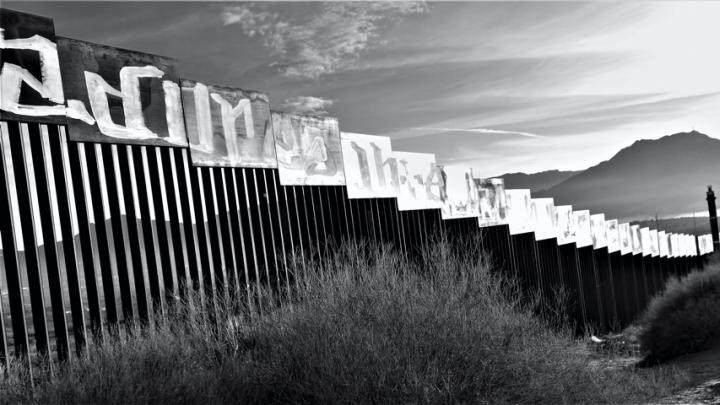The first time photographer Morgan Smith ’60 crossed into Mexico with his camera was during a Thanksgiving trip to see his sister-in-law in Tucson in 2011. Bored and restless during the long holiday, he decided to drive to Nogales, just over the border, where he found a taxi driver, “a really nice guy,” he says, “who kind of took me on a tour.” A retired lawyer and former Special Forces paratrooper who took up photography in his early thirties, Smith spoke Spanish and had been to Mexico many times for work and vacation, but this was a different experience. “You know, if you go to Paris and you’re on a tour, they’re going to show you museums and monuments and things like that,” he says. “Well, at that time, in Nogales, they’d show you battle sites.” The taxi driver took Smith to a house riddled with bullet holes, where a deadly shootout had taken place between cartel members and police. Later, he showed Smith the spot where the city’s chief of police had been ambushed and killed. “And I felt like there was just such a contrast between people like this taxi driver and his wife”—who had invited Smith into their home and insisted on cooking him breakfast—“and this violence.”
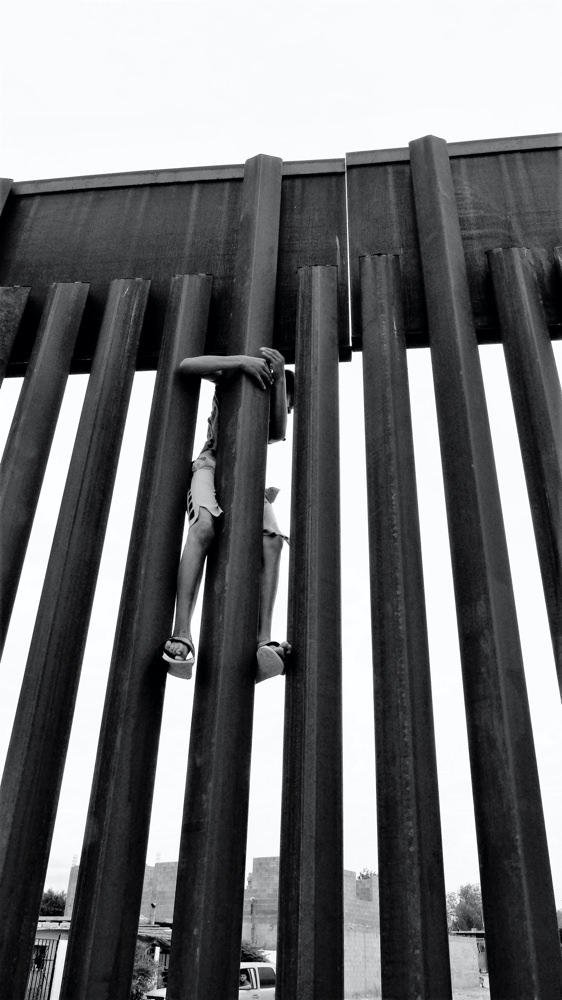
As Smith was handing out dollar bills to children on the other side of the border, one boy offered to climb the wall for an extra dollar. “‘I’ll show you how to climb it,’” Smith remembers him saying. “And he went up that thing so fast—this 13-year-old kid, climbing a wall we spent billions to build to keep people out.”
Photograph courtesy of Morgan Smith.
Not long afterward, a friend in Santa Fe, where Smith lives, moved to the tiny town of Palomas, Mexico, after her divorce and spent several months volunteering at an orphanage there. Smith drove down to visit her, “and I was very, very nervous,” he recalls. “I mean, there were terrible stories going around about the mayor who was abducted and murdered, and a dentist who disappeared and was never seen again.” Smith had experienced danger before: as a law student during the summer of 1965, he had been briefly kidnapped by the Ku Klux Klan while volunteering with the Law Students Civil Rights Research Council in Durham, North Carolina; and in 1971 he had traveled to Cambodia as a freelance writer, spending time with the Cambodian army.
But the dangers in Mexico felt different to Smith—omnipresent and unpredictable. He remembers asking his friend at the orphanage, “‘Aren’t you scared being down here?’ And she said, ‘Well, this is my mission. This is what I’m supposed to be doing, caring for these kids.’” Again, the same contrast struck him, between kindness and violence, between rescue and destruction.

Some migrant families camped on a side street next to the Juárez-Lincoln International Bridge that leads to El Paso, Smith explains, because they believed it would help shorten their wait times for asylum hearings. This migrant family had been living on the street for three weeks, he says.
Photograph courtesy of Morgan Smith.
That idea grew into a needling fascination that led to what has become a decade-long photographic project. Smith has traveled into Mexico more than 100 times now, documenting conditions along the border, as well as in Palomas and Ciudad Juárez, a notoriously dangerous city that lies 20 miles south of El Paso. He’s published essays and photographs in newspapers across the Southwest: The Santa Fe New Mexican, Rocky Mountain News, El Paso Inc., Aspen Times Weekly, Desert Exposure. He has made friends with many of the people he’s met and photographed: street preachers, fellow photographers, families, a priest who operates a shelter for migrants, a former addict who runs a mental asylum, a woman who for 50 years ran a program helping young women escape from drugs and prostitution. “There’s some pretty powerful lessons about how to help people when you don’t have a great deal of money,” Smith says. He started bringing food and used clothing to give away, and he’d stuff his pockets with $1 bills to hand out to children. A few years ago, he helped raise money to build a house for a woman and her grandchildren.

Padre Javier Calvillo, the director of La Casa del Migrante in Juárez, Mexico, with a woman and her children from El Salvador. “This guy is a driving force for whatever good happens for migrants there in Juárez,” Smith says. “He’s really just one of those unique human beings.”
Photograph courtesy of Morgan Smith.
And meanwhile, he took pictures recording what life was like there. In 2018, when a surge of migrants began fleeing northward, away from violence and poverty in Central America, colliding at the border with the Trump administration’s increasingly harsh immigration measures, the work felt more important to him than ever. He turned his focus to the migrants along the border who were seeking asylum in the United States, and, more broadly, to the capriciousness and cruelty of American immigration policy. Traveling to the Mexican side of the border once or twice a month, he interviewed and photographed as many people there as he could, both those passing through and those who were residents.
A kind of tender knowingness pervades many of Smith’s images, of families camped out waiting for their asylum hearings, kids at play on the sidewalk, community organizers, Mexican soldiers and police officers. Captured in black and white, Smith’s subjects seem to open themselves to the camera, revealing fear, uncertainty, desperation, hope. “I think it’s hard for Americans to imagine what it’s like,” he says, “to come from a very poor area in, say, Honduras, which is one of the most dangerous countries in the world, and travel thousands of miles to Juárez, another dangerous place, where you know nobody, not really being sure what’s going to happen to you. It’s pretty heroic.”

Migrant kids at the international bridge. The man, Pedro, was a local resident of Juárez, and he was organizing games for them to play.
Photograph courtesy of Morgan Smith.
In one way or another, Smith has been thinking about Mexico for more than half a century. In college, he concentrated in Spanish literature—a whim more than considered decision, but one he stuck with and grew into—and after his junior year, he hitchhiked into Mexico after a summer of ranch work and spent several weeks traveling around the country. “It was an eye-opening trip,” he says. “The people I met, the places I went—it kind of sparked something.” A few years later, when he and his first wife got married (she died in 2016), they started vacationing in Mexico, spending time in Mexico City and climbing the mountains and volcanoes to the south of the city. “It was pretty safe back then to go down there and rent a car and drive around.”
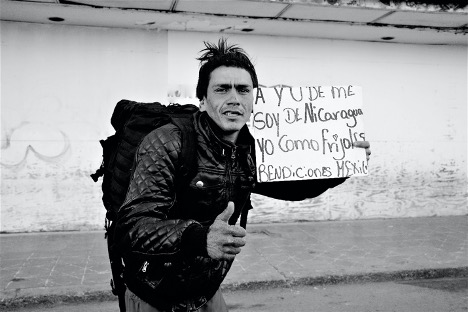
A young man from Nicaragua begs for help on the streets of Juárez.
Photograph courtesy of Morgan Smith.
Smith spent much of his career as an attorney living in Denver and working in Colorado state government. For 10 years, he was director of the state’s Office of Economic Development and International Trade, with a goal of building ties to other countries in order to attract investments and business opportunities for Colorado companies. One of the state’s strongest industries was in the environmental sector, and to Smith, Mexico seemed a natural partner for it. “Mexico City is sort of like Denver,” he says, “in that it’s located in a geographical bowl that tends to trap vehicle-related pollution.” Smith put together a series of trade missions to Mexico, pairing up environmental officials and experts and company executives from both countries. “They were desperately trying to improve air quality there,” he says. “Sometimes you’d literally have a meeting with the head of Mexico City’s environmental agency at 10 or 11 o’clock at night. And it would be full of people. I thought, God, these people are really dedicated.”
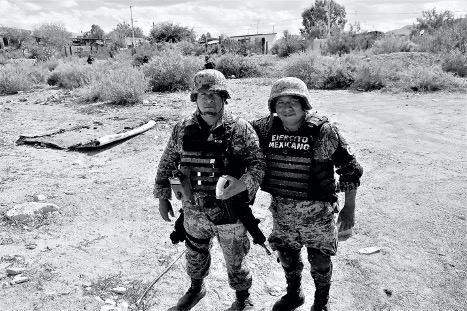
Mexican soldiers guard the border wall west of Juárez.
Photograph courtesy of Morgan Smith.
During the past year, COVID-19 prevented Smith from traveling into Mexico. On Christmas Eve, he made only his second trip to the border since the pandemic began, loading up his car with sandwiches and $1 bills for the 700-mile round-trip journey. His wife and their two tiny dogs came along, as they often do. When they reached the border wall just west of El Paso, he stopped and spoke to a few Mexican soldiers patrolling the other side, offering them packets of cookies, and chatted with children through the wall, putting cash in their hands when they reached their fingers through the bars (“You do what you can”).
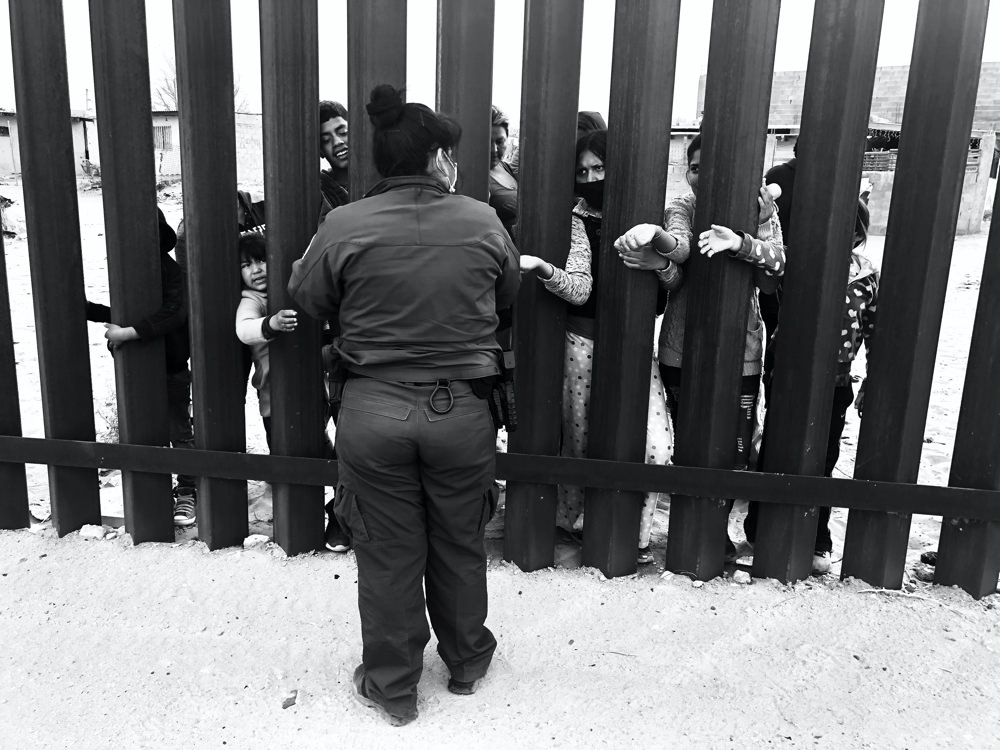
Last December, Smith met an off-duty American Border Patrol officer who was handing out Christmas gifts of cash to children and their mothers on the Mexican side of the wall.
Photograph courtesy of Morgan Smith.
Turning around to drive back after an hour or so, Smith spotted a U.S. Border Patrol car and pulled up next to it. A few feet away, an officer was standing next to the wall, but she wasn’t on duty, Smith says. Instead, she was handing out money as Christmas gifts to families on the other side. “I think she was from Mexico originally—it was hard to hear her through the mask, but she had a heavy accent,” he says. He still had a few dollar bills left in the car, “So we pooled our resources and gave these kids—there were two mothers and about eight or nine children—we gave them what we had.” Afterward, he took a few photographs, none showing the officer’s face (“We agreed that might not be a good idea”) and then they each departed for home. More than a month later, he is still thinking about that encounter. “You know, the Border Patrol doesn’t have a very good reputation,” Smith says, “but this woman was special.” Watching her commune with children on the other side was a moving experience. “When you go down there,” Smith says, “you never know what will happen. You just never know.”
